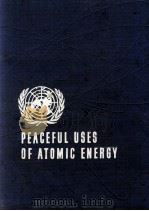《THE UNITED NATIONS DECLARATION ON FRIENDLY RELATIONS AND THE SYSTEM OF THE SOURCES OF INTERNATIONAL》
| 作者 | 编者 |
|---|---|
| 出版 | SIJHOFF & NOORDHOFF |
| 参考页数 | 342 |
| 出版时间 | 1979(求助前请核对) 目录预览 |
| ISBN号 | 902860149X — 求助条款 |
| PDF编号 | 812893608(仅供预览,未存储实际文件) |
| 求助格式 | 扫描PDF(若分多册发行,每次仅能受理1册) |
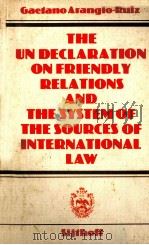
Introduction1
1.Object of the essay:Resolution 2625(XXV)as a specimen of"declaratory"resolution.Its features1
2.Limited scope of the analysis of the declaration.The preliminary problem of the legal effects of"declaratory"resolutions3
3.Samples of doctrinal positions4
4.Direct and indirect problems involved8
5.In particular:the theory of"declaratory"resolutions as expressions of the will of an"Organised International Community"10
6.Plan of the book.Purpose of the Appendix12
Chapter Ⅰ.The theory of Assembly declarations as special law-making acts14
Section 1.The alleged legitimation by a Charter or other contractual rule14
7.Decisions and recommendations.The non-binding character of General Assembly recommendations14
8.The language of the Charter(Articles 10-14)15
9.Travaux preparatoires16
10.Charter and Covenant compared.17
11.The practice of States.The UN Secretariat Memorandum on Assembly declarations18
12.Other possible sources of an Assembly's"legislative"function.Charter amendments and separate agreements20
Section 2.The alleged legitimation by a customary rule22
13.Logical possibility of the existence of a customary rule legitimising a law-making function of the General Assembly.Positive arguments advanced22
14.Evaluation of such arguments23
15.Negative data:the attitudes of States25
16.Further negative data29
Section 3.The doctrine of Assembly declarations as the expression of the"will"of the"Organised International Community"(and other doctrines)30
17.The doctrine of an"Organised International Community"and the Assembly's"legislative"function30
18.Impact of this doctrine.Renvoi to the Appendix32
19.The doctrine of international law as an"authoritative decision-making process"and the Assembly's"legislative"function33
20."Rules"and"process"in the concept of law34
21.The question of"authority".Renvoi to the Appendix36
Chapter Ⅱ.Assembly declarations within the framework of existing law-making and law-determining processes39
Section 1.Assembly declarations as part of the practice of States39
22.The value of Assembly declarations in general39
23.Assembly declarations and the law-making and law-determining processes40
Section 2.Assembly declarations and customary law41
24.The impact of declarations on Consuetudo and Desuetudo.International custom and the distinction between formal and material sources41
25.Resolutions and"United Nations practice"in a wide sense43
26."United Nations practice"and"States' practice at large"44
27.The element of"repetition".Declaration of rules of conduct and conduct46
28.Relevance of votes:majorities and unanimities49
29.The time factor52
30.Assembly resolutions as an"accelerating"element in the custommaking process54
Section 3.Assembly declarations and international agreement55
31.The content of agreement and the agreement56
32.The content of"declaratory"resolutions and the content of agreement57
33.The relationship between resolution and agreement58
34.Non-equivalence of vote and consent(as an element of agreement)59
35.The relationship between"declaratory"resolution and agreement as a case by case matter.Some general criteria61
36.Examples.Resolution 1962(ⅩⅧ)of 13 December 1963 on Outer Space;and the"Uniting for Peace"resolution63
Section 4.Assembly declarations and the general principles of international law65
37.Introductory65
38.The concept and nature of the general principles of international law Their relationship to the general principles of law recognised by civilized nations;other issues(a-f)65
39.The role of Assembly declarations70
Section 5.The role of declaratory resolutions in legal determination and interpretation73
40.The question of an Assembly's law-determining function according to the Charter73
41.The San Francisco documents on Charter interpretation73
42.Assembly decisions,arbitral awards and Court judgments.Respective impact on Charter interpretation76
43.Assembly recommendations as interpretative acts in a material sense.Spontaneous compliance77
44."Legalisation"of Assembly interpretations by custom or agreement78
45."Legalisation"of Assembly interpretations by arbitral award or judicial decision80
46.The theory of an Assembly's power of authentic interpretation81
47.Other doctrines87
Chapter Ⅲ.The status of resolution 2625(ⅩⅩⅤ)89
48.The legal basis of the"Friendly Relations"declaration89
49.The procedure for the drafting of the declaration compared to the ordinary method of progressive development and codification91
50.The declaration compared to codification treaties93
51.Differences in legal value among the enactments contained in the declaration.Conceivable possibilities(ⅰ-ⅲ)94
52.The declaration and existing(Charter and customary)international law95
Chapter Ⅳ.The formulation of the single principles98
Section 1.The prohibition of the threat or use of force in international relations98
53.The subjective and objective scope of the prohibition98
54.Meaning of"force"98
55.Indirect aggression.Armed reprisals100
56.Crimes against the peace.War propaganda.Acquisition of territory by force.Military occupation101
57.The violation of boundaries and of lines of demarcation104
58.The subjective scope of the prohibition of force.The problem of ius ad bellum106
Section 2.The obligation to settle international disputes by peaceful means110
59.The principle of peaceful settlement compared to the prohibition of force110
60.Essential features of the Charter system112
61.The conservative approach of the"Friendly Relations"Committee to the problem of peaceful settlement113
62.The"reform"proposals and their systematic rejection114
Section 3.Non-intervention117
63.Introductory117
64.Raison d'etre of international rules on non-intervention117
65.The prohibition of intervention and the prohibition of the threat or use of force.The problem of co-ordination119
66.Difficulties arising from the coexistence of the prohibition of intervention with Article 2.4 of the Charter121
67.General features of the formulation of non-intervention contained in the declaration124
68.The first sentence of the initial paragraph125
69.The second sentence.A possible interpretation126
70.Other conceivable interpretations128
71.The second paragraph.Overlapping with the formulation of the prohibition of the use or threat of force129
72.Conclusive remarks130
Section 4.Self-determination131
73.Problématique of self-determination in international law131
74.Whether self-determination is a matter of right132
75.The beneficiaries of self-determination according to the declaration:peoples or individuals134
76.The subjective scope of self-determination as formulated in the declaration:"all peoples"135
77.The objective scope of self-determination137
78.Further elements relating to the objective scope of self-determination137
79.The"right of resistance".The position of third States under the principle of self-determination138
80.The limits of self-determination.The clause safeguarding territorial integrity140
81.An assessment of self-determination.Lex lata and lex ferenda.Selfdetermination beyond the era of decolonisation141
Section 5.The other principles:co-operation;sovereign equality;compliance in good faith with international obligations142
82.Nature of the obligation to co-operate.Its relation with the other principles.Critique of the formulation142
83.The"principle"of sovereign equality.Tautological and repetitive nature of parts of the formulation144
84.Compliance with obligations.Technical improprieties and gaps in the formulation145
Chapter Ⅴ.The function of the declaration148
Section 1."Co-ordination of international legal systems"148
Ⅰ.Introductory148
85.The declaration as originally envisaged.Co-ordination of conflicting"International legal systems"148
86.The"socialist-capitalist confrontation";the north-south"confrontation"149
Ⅱ.The alleged confrontation of"international legal systems"153
87.The universal character of international law153
88.Errors involved in the pluralistic doctrines154
89.The essential unity of international law ratione temporis,ratione personarum,ratione materiae157
90.Dangers involved in the pluralistic doctrines159
Ⅲ.The doctrine of peaceful coexistence160
91."Peaceful coexistence"and"friendly relations"compared.The terminological issue160
92.Obstacles to the acceptability of the Soviet doctrine of peaceful coexistence as a legal doctrine.The substantive import161
93.The Marxist theory of law and international law162
94.Inherent limitations of the doctrine of peaceful coexistence163
95.The doctrine of peaceful coexistence and the nature of general international law164
96.The doctrine of peaceful coexistence ratione temporis165
97."Peaceful coexistence"ratione materiae.The institutional development of international law166
Ⅳ.The north-south confrontation167
98.Essence of the north-south confrontation.Lack of justification of a dichotomy of"systems"167
99.The"third world"and the institutional development of international law169
Section 2.The declaration's objectives170
100.The function of the declaration according to the relevant Assembly deliberations170
101.The declared objectives171
102.The declaration and lex lata172
103.The declaration and lex ferenda173
104.The declaration and the institutional development of international law175
Section 3.The declaration and legal policies177
105.The declaration as a possible"source"of international legal policies177
106.The place of legal policy in municipal law and in international law.Substantive and procedural differences179
107.Inadequacy of the declaration as a possible(material)source of international legal policies184
Conclusive remarks186
108.The causes of failure.The drafting procedure186
109.The choices of the United Nations membership187
110.The responsibilities of scholars190
111.Some contemporary approaches to the role of the scholar in the development of international law193
112.Shortcomings of such approaches:(ⅰ)de lege lata;and(ⅱ)de lege ferenda194
Appendix.The concept of international law and the theory of international organization199
Section 1.Introductory199
113.The doctrine of the"Organised International Community"199
Section 2.The concept of international law as the constitutional law of the universal society and the theory of international organisation201
114.The concept of international law as the constitutional law of mankind in the contemporary literature201
115.Essence of the said concept.International law as a decentralised system of inter-individual law204
116.Impact of the concept.Issues affected.Impact on the theory of international organisation.Main corollary:the alleged inherence of organisation in the universal society.Prior to Westphalia and after208
117.Another corollary.The treaty as an instrument of structural change of the universal society(the"centralising device")210
118.The municipal corporate body analogy and the constitutional theory of international organisation212
119.Westphalia reversed.The"centralising process"of the international system214
120.Further corollaries.The federal analogy and the theory of divided sovereignty in the study of international organisation215
Section 3.The lack of integration of the universal society and the nature of international law216
121.Unrealistic character of the"constitutional"theory.International law and the State216
122.Further data.International law and the subjects and agents of States219
123.The"State in the sense of international law"as a factual entity and the inexistence of a public law of mankind221
124.The origin of international law as law among sovereigns223
125.International law and inter-individual law in the universal society224
126.Human values and international law(as inter-State law)225
127.Historical"precedents"of international law as inter-group law228
128.The milieu of international law229
129.The characterisation of international law as opposed to inter-individual law230
130.Comparison with the"constitutional"concept.Affected issues232
Section 4.The lack of integration of the universal society and the nature of international organisation233
131.The organisation of inter-State relations.The problem of"original"organisation.Hegemony.Impropriety of the concepts of a"decentralisation"and"primitiveness"of the law of nations233
132.The municipal law"model"in the theory of international organisations235
133.The source of organisation in the corporate bodies of municipal law236
134.The activities of international organs distinguished:international activities in a narrow sense;and vicarious State activities.Verification of the municipal law analogy238
135.Continued:Superfluousness of the"community"(of States or peoples)concept240
136.Continued.Implausibility of the"community"concept243
137.Continued.Verification of the municipal analogy with regard to the legal personality of international organs.Source and nature of the legal personality of the United Nations.The personality of international organisations as a primary personality245
138.International organisations as instruments of structurally unaltered inter-State relations and co-operation:with regard to international activities in a narrow sense;and with regard to vicarious State activities250
139.Comparison with some dicta on international organisation252
140.The distinction between droit relationnel and droit institutionnel and the place of international organisation(the inter-State element)254
141.Continued:the institutional element.The"inner structures"of international bodies(the inter-individual element)255
142.The inter-State element and the inter-individual element of international organisation distinguished257
143.The inter-State element and the inter-individual element in the integrative and disgregative processes of international society.Deditio;annexation,protectorate258
144.Continued:the two elements distinguished in the formation of the United States.The"critical period"of the American Union260
145.Continued:the dichotomy of elements in the disgregative processes.Examples.The British Commonwealth262
146.Conclusive evidence offered by the foregoing analysis265
147.Distortions involved in the current theories of international organisation.Hegemony and international organisation266
Section 5.The alleged federal analogy and the concept of"divided sovereignty"in the theory of international organisation268
148.The alleged"federal analogy".Differences between the federal government-member State relationship and the international organ-member State relationship268
149.The theory of"divided sovereignty".The divisibility of sovereignty within federal law(and national law in general)270
150.Sovereignty"external".Limitations of sovereignty and limitations of freedom distinguished272
151.Error involved in the theory of sovereignty divided between States and international organs273
152.Reality and dogma in the theories of the relationship between sovereignty and international law274
Section 6.The theory of international organisation and the general criteria of interpretation of constituent instruments278
153.The interpretation of the constituent instruments of international organisations278
154.The prevalence of the contractual element279
155.International constituent instruments and federal instruments compared from the point of view of interpretation280
156."Authority-building"by international organs282
157.Evolutive interpretation.The"constitutional"theory of subsequent practice283
158.Critique284
159.The contractual(inter-State)element and the institutional(interindividual)element distinguished from the point of view of interpretation289
Section 7.The theory of international organisation and the normative role of the General Assembly290
160.The problem of"legislation"in the international society.The essence of legislation290
161.The traditional law-making processes of international law and the concept of legislation291
162.Continued:Custom292
163.Continued:Agreement293
164.Continued:the international agreement as inter-State contract294
165.The enactments of international organisations and the concept of legislation.The normative role of organs when carrying out vicarious State activities297
166.The normative role of international organs in the performance of international activities in a narrow sense.General assembly decisions;and recommendations298
Bibliography303
Annex:the"Friendly Relations"Declaration(General Assembly Resolution 2625-ⅩⅩⅤ)318
Index325
About the author341
1979《THE UNITED NATIONS DECLARATION ON FRIENDLY RELATIONS AND THE SYSTEM OF THE SOURCES OF INTERNATIONAL》由于是年代较久的资料都绝版了,几乎不可能购买到实物。如果大家为了学习确实需要,可向博主求助其电子版PDF文件(由 1979 SIJHOFF & NOORDHOFF 出版的版本) 。对合法合规的求助,我会当即受理并将下载地址发送给你。
高度相关资料
-
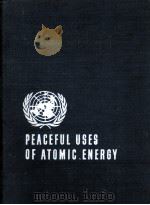
- PROCEEDINGS OF THE SECOND UNITED NATIONS INTERNATIONAL CONFERENCE ON THE PEACEFUL USES OF ATOMIC ENE
- 1958 UNITED NATIONS
-

- THE DEVELOPMENT OF INTERNATIONAL LAW THROUGH THE POLITICAL ORGANS OF THE UNITED NATIONS
- 1963 OXFORD UNIVERSITY PRESS
-
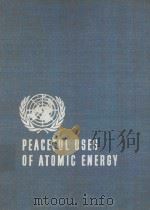
- PROCEEDINGS OF THE SECOND UNITED NATIONS INTERNATIONAL CONFERENCE ON THE PEACEFUL USES OF ATOMIC ENE
- 1958 UNITED NATIONS PUBLICATIONS
-
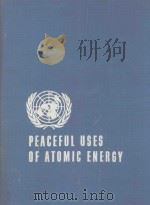
- PROCEEDINGS OF THE SECOND UNITED NATIONS INTERNATIONAL CONFERENCE ON THE PEACEFUL USES OF ATOMIC ENE
- 1958 UNITED NATIONS PUBLICATIONS
-
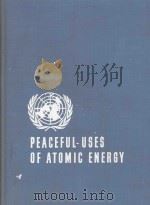
- PROCEEDINGS OF THE SECOND UNITED NATIONS INTERNATIONAL CONFERENCE ON THE PEACEFUL USES OF ATOMIC ENE
- 1958 UNITED NATIONS PUBLICATIONS
-

- PROCEEDINGS OF THE SECOND UNITED NATIONS INTERNATIONAL CONFERENCE ON THE PEACEFUL USES OF ATOMIC ENE
- 1958 UNITED NATIONS PUBLICATIONS
-
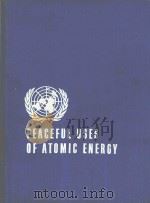
- PROCEEDINGS OF THE SECOND UNITED NATIONS INTERNATIONAL CONFERENCE ON THE PEACEFUL USES OF ATOMIC ENE
- 1958 UNITED NATIONS PUBLICATION
-

- The United Nations and International Peacekeeping
- 1996 I.B. Tauris Publishers
-
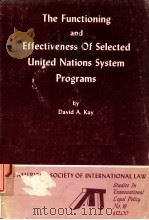
- THE FUNCTIONING AND EFFECTIVENESS OF SELECTED UNITED NATIONS SYSTEM PROGRAMS
- 1980 THE AMERICAN SOCIETY OF INTERNATIONAL LAW
-
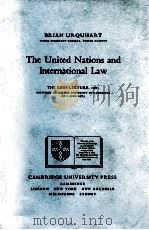
- THE UNITED NATIONS AND INTERNATIONAL LAW
- 1986 CAMBRIDGE UNIVERSITY PRESS
-
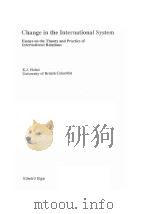
- CHANGE IN THE INTERNATIONAL SYSTEM ESSAYS ON THE THEORY AND PRACTICE OF INTERNATIONAL RELATIONS
- 1991 UNIVERSITY OF BRITISH COLUMBIA
-
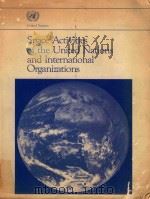
- SPACE ACTIVITIES OF THE UNITED NATIONS AND INTERNATIONAL ORGANIZATIONS
- 1986 UNITED NATIONS
-
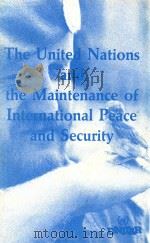
- The United Nations and the maintenance of international peace and security
- 1987 M. Nijhoff : Distributor for the U.S. and Canada
提示:百度云已更名为百度网盘(百度盘),天翼云盘、微盘下载地址……暂未提供。➥ PDF文字可复制化或转WORD
